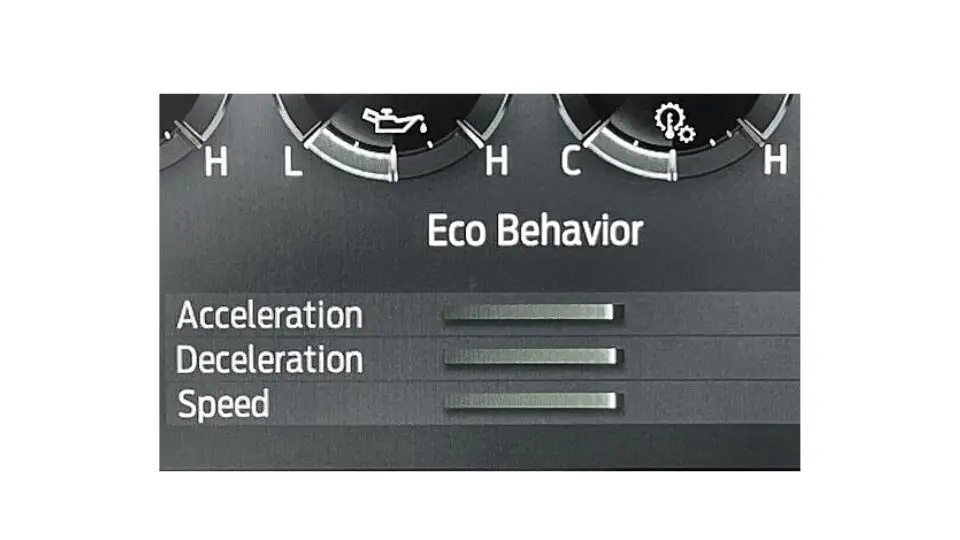Fuel efficiency is one of the most important things to consider when you drive, especially if you’re a truck owner who needs to haul large items and travel long distances.
For those who need to save money on gas, Ford offers an Eco Mode feature for the F150 that helps drivers get more miles per gallon.
In this article, I am going to go into more detail about what this drive mode does, when to use and when not to use it.
What is Eco Mode on an F150?
In short, eco mode on an f150 is a “drive mode” that helps drivers maximize their fuel efficiency, by adjusting the way their truck performs.
Eco mode on an f150 is not a new feature; it has been around since 2012 with the purpose of improving fuel efficiency at an expense of performance reduction.
How Does Ford F150 Work?
When you activate eco mode on your f150, the truck’s computer will adjust the way it works, here are some of the things that happen when the Eco mode is enabled:
1. Lower RPM Transmission Shift Points
When you activate eco mode on your f150, the truck’s computer will adjust transmission shift points so that they are lower than normal.
This results in slower acceleration and more time spent in each gear, which helps increase fuel efficiency.
2. Reduced Throttle Response
Eco mode on your f150 will reduce throttle response. This means that when you step on the gas pedal, it takes longer for the truck to respond than normal.
This can make driving feel sluggish, but it does help save fuel.
From my own experience, when driving an F150 it is hard not to press down the gas pedal, I mean this pickup is fun but that results in increased fuel consumption.
When you have the eco mode on, the vehicle automatically adjusts the throttle response.
3. Air Con is reduced
Eco mode on your f150 will reduce air con. This means that when you turn on the air conditioner, it takes longer to cool down the cabin than normal.
However, this can be useful if you are trying to save fuel on long drives.
When Should You Use Eco Mode On an F150?
Now, that you know how the Eco Mode works on your Ford f150, let’s look at when should you use it.
City Driving
Eco mode is great for city driving. When you’re in the city, you don’t need a lot of power from your engine because there is plenty of traffic around you and not much space to accelerate quickly.
This means that using eco mode on your F150 will save fuel and money while also reducing carbon emissions.
Stop-and-go traffic is known to negatively impact your F150’s fuel economy. If you have to drive in stop-and-go traffic then I recommend enabling it.
Highway Driving
I know there is a general misconception that eco mode does not work on the highway, but this is not true.
Eco mode can help you save fuel while driving on long road trips.
The reason why most people think the eco mode is not effective on highways is that you are driving at a constant speed and there is no traffic around you. This means that your F150’s engine does not need to work as hard.
However, from my experience, I have found that eco mode is still effective on highways.
When You Shouldn’t Eco Mode on an F150?
Let’s look at when it’s best to drive in other modes than eco mode.
Looking to Overtake or Merge into a Highway
If you are looking to overtake or merge into a highway, then you should not be in eco mode. The eco mode has a slower acceleration rate than normal and sport modes, so this will make it harder for you to get up to speed quickly.
Snow and Wet Conditions
When the road is wet or covered in snow, it’s best to use a different mode than eco. Eco mode is designed to help you save gas while driving, but when it rains or snows, you are better off, using “Snow mode” or Normal drive mode.
How Much Gas Does F150 Eco Mode Save?
The answer to this question is that it depends. It all depends on how much gas you are currently using and the distance you drive on a daily basis.
In other words, if you drive a lot of miles every day, then the eco mode will save more gas than someone who drives fewer miles each day.
However, From my experience, you can expect to save about 2 miles per gallon on average.

